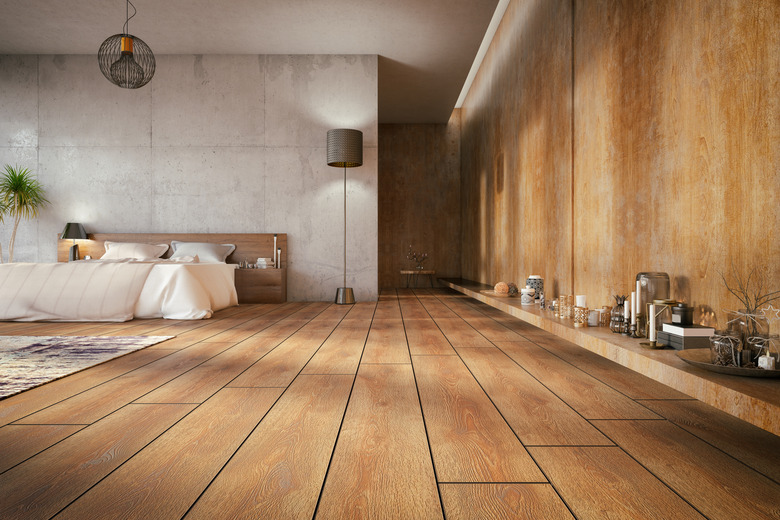How To Level Uneven Floor Joists In An Old House
Before you attempt to fix your sagging floors, you have to figure out what's wrong in the first place. If you don't know what you're doing, you should reach out to a professional, especially when dealing with uneven floors in an old house with moisture damage. But there are ways that you can fix the issue yourself though.
Inspect Your Floors
Inspect Your Floors
Floors tend to settle near the center of a house because the perimeter floors are constructed over a sound, deep foundation. The perimeter walls tend to settle very little. If you're experiencing sloping, you need to inspect the support beams.
If you have a house that's built over a basement, you need to examine the beams and posts where they meet the floor. Make sure that you don't have wood posts set on dirt floors or with concrete poured around the bases.
These type of posts can rot and melt into the floor. If this happens, the house will settle from bottom to top. To test if you have rotting wood posts, push a screwdriver into the post at the floor line. If the area is mushy, then that's why your floors are sloping.
Other Sloping Reasons
Other Sloping Reasons
Another reason that your floor could be sloping is because of insect damage and moisture. If you have a damp basement or crawlspace, look to see if there's insect damage. Powderpost beetles leave joists and beams filled with small holes, and carpenter ants make their appearance at the first sign of warm weather in the spring. Termites leave telltale mud tunnels on foundations and posts. When you fix your moisture problems, this will fix your sloping floor issue.
Inspect Floor Joists
Inspect Floor Joists
If your floor joists have been cut improperly to install pipes, wiring or HVAC ducts, this could be causing your floor to slope. If you have improper holes and notches from alterations and running service lines, this can be the source of weakened joists. There shouldn't be any cuts or penetrations in the middle third of the joist or at the bottom of the joist either.
If there are notches at the end of the joist, they should not exceed a quarter of the joist depth. Holes should be a minimum of 2 inches from the top or bottom of the joist. It also should be no larger than a third the depth of the joist, too.
How to Fix
How to Fix
If you need to fix sagging floors, there are a variety of things you can do. You can try reinforcing metal, but this depends on the conditions you're encountering. You can strengthen or repair existing framing members by adding reinforcing material.
You can sandwich the framing on either side with plywood. If you're going this route, make sure that the plywood is installed correctly, or else it won't support the framing member.
Sistering the Framing Member
Sistering the Framing Member
Sistering is when there is identical lumber bolted to the member. Even better than that is sistering with a flitch plate. A flitch beam has steel plates that are sandwiched between two solid timber members, and those members are bolted together. You can alternate layers of timber and steel, and that will increase the strength of the beam.
Bridging the Floor
Bridging the Floor
You can also lay down new hardwood floor on the top side of the floor. A plywood subfloor acts as a bridge for minor waves in the existing floor, as well as a leveling compound. You just have to make sure that the joists can handle the addition of more weight from the plywood subfloor and any additional floor coverings.
Leveling Floor Joist With Shims
Leveling Floor Joist With Shims
If you have an uneven floor, you may need to think about leveling floor joists with shims. This job can run you $1,000 and $5,000, depending on the extent of the job. Leveling the floor with shims is when you attach thin, wedge-shaped pieces of wood on top of the low areas of the joists to make the top joists even. You can do this job on your own, but you need to know exactly what you're doing and how to operate equipment like a floor joist jack. This helps to reduce friction underneath a load as you're making adjustments.
